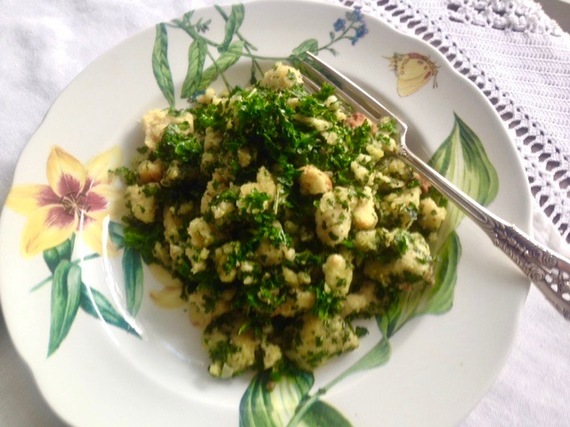America has been called the melting pot -- the idea is that we're a blend of cultures. Portugal does a better job of showing how it's done, with influences including the ancient Romans, the Celts, the Visigoths, the Moors, the Spanish, the French and, thanks to Vasco de Gama, India and Brazil (he opened the sea route to the first and discovered the second).
Of course, Portugal's been at it longer than we have. This western sliver of Europe predates America by a good many centuries, and you feel it and see it everywhere, with towns dominated by ancient palaces and monasteries. Lisbon pulsates with a more modern vibe, but its shops and cocktail bars are perched along narrow, steep medieval cobblestone streets that charm the spirit and wreck the shoes. Living with a physical sense of past gives a sense of perspective, of a people who've gotten through tough times before. For Portugal, tough times include invasions by just about everyone, the Plague, the Spanish Inquisition, Portugal's own dictator or two, the earthquake which all but demolished Lisbon in 1755 and the country's sputtering economy now.
Portuguese cuisine reflects all of that, a mashup of cultures, a marathon of history. Vindaloo, the tangy, spiced curry from India's Goa region, got its name from the Portuguese term vinha de albos -- wine vinegar and garlic. Wine vinegar and garlic add zip to many mainstays of traditional Portuguese cookery, the sturdy stews and bread-thickened soups, budget-friendly, belly-filling dishes for hunkering down and seeing out tough times. Most feature pork, sausage, seafood and eggs. For that, your source should be James Beard Award-winner David Leite. Vegan is more of a challenge, but not impossible. There's even Vegoa, a fledgling vegan community in the Algarve region.
From this mashup of cultures comes one great mashup of a dish -- migas. Pronounce it with a Portuguese accent -- migash, it's comfort food as old a Portugal and a prime example of poor man's cookery. Take a handful of basic ingredients, including stale bread (migas means crumbs), olive oil, garlic and greens, and ten minutes later, you have something amazing.
The story goes Portuguese shepherds from centuries past created it to feed their bellies when they were out in the field -- quite literally -- with their flock. There were no cell phones, there were no Uber Eats, there was no packaged food. When they were hungry, they mashed up what they had for a delightfully unrefined dish.
Some make it thick, moist and porridgey, others go for a dryer migas, more like a bread-based scramble. Migas in every form welcomes all kinds of add-ins-- including vegan options like chopped red pepper, onions, cilantro, tomatoes or tremoços (Portuguese supersized lupini beans. Zing it up with piripri (Portuguese chili, vinegar and garlic sauce), but it's not meant to be elegant At its most pure and simple, migas is a belly-filling sheepless treat replete with kale or collards -- they grow everywhere in Portugal. It's quick, easy, green and gutsy, the perfect restorative after holiday excess. Traditionally served at breakfast, it's good any time of day.
Old as it is, Portugal has embraced some aspects of modernity that put us in the shade. Much of the country is powered by green, renewable energy, with rows of windmills atop hillsides. But it keeps its traditions and past alive, too. We can all learn from the past. We can learn from each other. Migas is a keeper.
Migas
In Portugal, migas is made with stale broa, a dense, crusty, yeasted cornbread, very far from the fluffy quick bread we call cornbread here. You can substitute any day-old artisanal loaf.
2 tablespoons olive oil
3 garlic cloves, minced (about 1 tablespoon)
2 cups dry bread, coarsely crumbled (a few slices)
2 cups kale or collards, sliced into skinny ribbons, or, okay, if you must, blitzed in a food processor
1 to 2 tablespoons water or vegetable broth, plus more to taste
sea salt and pepper to tasteIn a large skillet, heat olive oil over medium-high heat. Add minced garlic and stir with a large wooden spoon for about 3 minutes, until it turns fragrant and golden.
Crumble in the stale bread. Stir for a minute or two, so the bread toasts and gets garlicy.
Add the kale or collards by the handful and splash in the water or broth. Continue cooking and stirring, for another 5 minutes or so, until the greens wilt, grow tender and deepen in color. Season generously with sea salt and pepper and you're done. Behold a scramble-type migas.
If it's a soupier, more porridgey migas you're after, add 1 cup of water or broth and stir together for a few more minutes until heated through.
Serves 2 generously, and of course you may double the recipe.
More at soulfulvegan.com.

